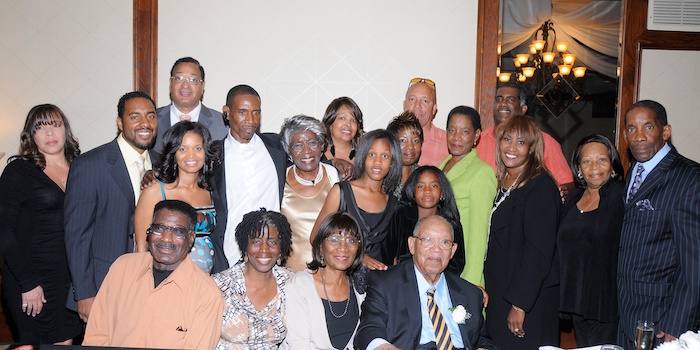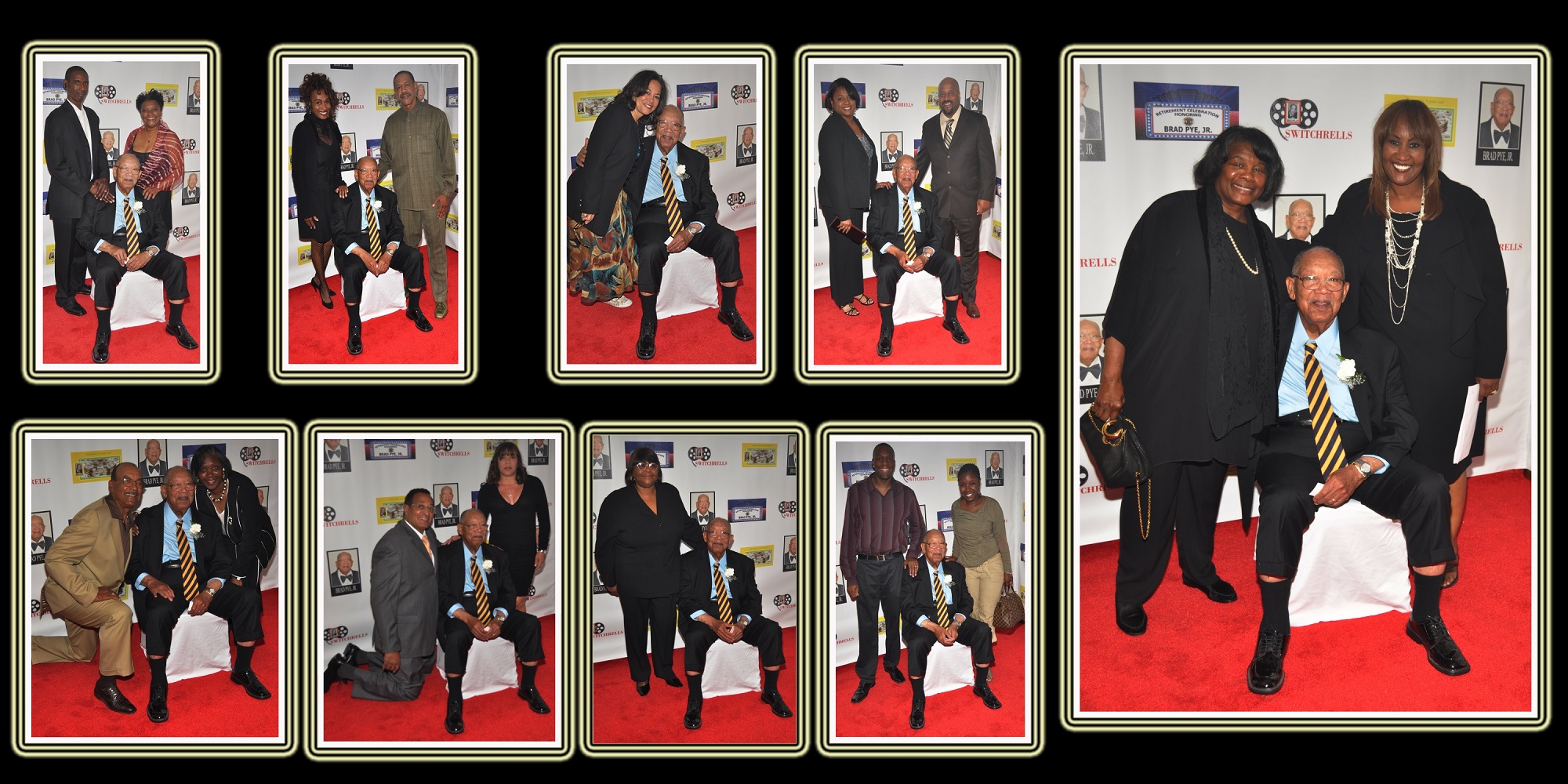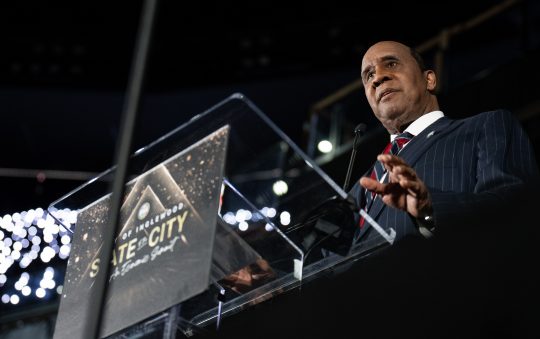
(Editor’s Note: Brad Pye Jr., mentored Ken Miller after hiring him to work for the Sentinel in 1977 as an 18-year-old high school graduate. Ken would go on to spend more than three decades with the paper following in his giant footsteps.)
“I hope that I live to be 100-years-old and that you live to be 101 so that I may never see good people like you pass away.” Brad Pye Jr.
That is a phrase that Brad would say after almost every speech that he would give. There were many of them, far too many to recount, such as banquets for high school basketball champions and others.
Brad Pye, Jr. didn’t live to be a 100. He died at 89 on July 5, after a debilitating stroke that he never recovered from. Family surrounded him at his home in the Crenshaw District when he took his last breath. He lived a full life.
Just the day before he passed, I spoke with his daughter, Jill, who informed me that he was in hospice and living out his days on earth. However, when I got the call on Sunday evening it was still shocking. Brad Pye, Jr. is gone!

No one lives forever, and I knew that Brad was not going to be the first, but his passing allowed me to have the first real reflections of the impact he had on my life.
Brad had already been at the Sentinel for 20 years when he recruited me out of Fremont in 1977. By this time, the $5 car ride from his home in Plain Dealing, Louisiana to Los Angeles in 1943 had been a distant memory
Committed to follow his dream to become a journalist, he went on to attend Jefferson High School, maintained jobs working as a gas station attendant in the evenings and sleeping on army cots in freezing hallways along the way.

It was those humble days that drove him to be the first in the office and the last to leave. Brad Pye, Jr. wasn’t just a workaholic; he was married to his craft.
I believe that is why he and Al Davis (owner of the Raiders of the NFL) were such good friends because they believed that what they were doing was the most important thing in the world.
“Ken, the only time that you don’t come to work is if you are dead or dying,” Brad would say to me. Now, I didn’t know if he literally meant it, but I didn’t miss a day of work for the next five years.
He led by example, and you knew that when he’d call for assignments on Tuesday, that whatever story you said you had better be finished or suffer a verbal lashing from Brad.

Our editor, Jim Cleaver, was notorious for giving Brad stories that were not yet written and their frequent clashes were legendary on 43rd and Central Ave.
During those days, the Sentinel staff was like a Black journalism Hall of Fame, Entertainment Editor Gertrude Gipson, Jessie Mae Beavers, Virgie Murray, A.S. Doc Young, and photographers such as Guy Crowder and Howard Bingham.
Brad grew up idolizing the great Herman Hill, the West coast editor of the Pittsburgh Courier, but later hired Hill as a travel editor for the Sentinel.
He wasn’t the most talented journalist that the Sentinel had and he knew that, but Brad was the supervisor, he was the boss in charge, simply because he was willing to work harder.
“There will always be people more talented than you, but don’t ever let anyone out work you,” he would say.
It was a relentless effort and ethic that would be beneficial in many other aspects of life.

Which is why when Brad left the Sentinel after 30 years in the late 1980s, he immediately transitioned to local government, working as a deputy for Supervisor Kenneth Hahn. He had joined Cleaver again who left two years prior to work for Hahn.
Twenty-four years in various departments with the County of Los Angeles, he never lost his desire for his dream job of journalism.
Not all local professional teams would provide him with press credentials because he did not have an affiliation.
Imagine that! The man who is responsible for Blacks being allowed in the Coliseum press box denied access.

He was sort of the Jackie Robinson of sports journalism. There may have been others before him, but the responsibility was Brad’s to own and he did.
He challenged all the sports teams and made sure they provided the Sentinel with season tickets and access that daily newspapers had.
His health began to fail him later in life, a man who loved to drive to the ballpark, required someone else to drive him and escort him to the press box, which I did on occasion.
Brad was America’s Black sports reporter, working at radio stations KGFJ AM, KACE FM, KDAY AM, and KJLH FM.
Brad introduced me to radio and allowed me to do shows. I still can’t figure out how they let a teenager say, “For all you do, this Buds for you.”
He brought his own sponsors to the table and they paid him big bucks, I made $25 a show, so I know he was raking it in.

In the twilight years, he would write and send his columns and submit them to any newspaper that would be kind enough to print them.
“Switch reels,” his radio moniker, now served as a break between subject matters in his columns.
Four years ago, Sentinel Publisher Danny J. Bakewell Sr. brought Brad back home to the Sentinel where it all began.
Brad still had a few more ideas to get out before he left us, and so now we can say that it ended where it all began for Brad Pye Jr.
Right at the Los Angeles Sentinel, where a new generation journalists thrive because of Brad’s dream.
Most people will remember Brad as a pioneering sports journalist who was instrumental in chronicling the stories of Black athletes from high school, college through the pros, but he was much more than that.












